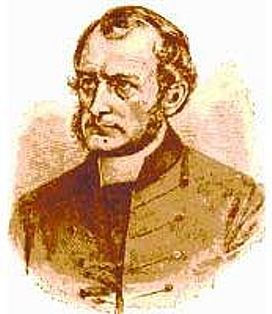George Augustus Selwyn (1809-1878)
The University of Cambridge has thirty-one Colleges, but few of these are named after any of their distinguished alumni. Selwyn College is an exception. It bears the name of one of the great ecclesiastical figures of the 19th-century. George Augustus Selwyn founded the New Zealand Church and became the country’s first Bishop. After his death, his friends and colleagues founded Selwyn College, Cambridge, in his memory.
Contents
Early life of George Selwyn

George Augustus Selwyn was born at Hampstead in 1809, the second son of William Selwyn, an eminent constitutional lawyer. His education began at a preparatory school at Ealing, He was a contemporary of the theologian and poet, John Henry Newman, who later became a Roman Catholic Cardinal.
Selwyn continued at Eton College, where he began his lifelong friendship with William Gladstone, who became Prime Minister. Gladstone and other friends were to become influential promoters of his cause in both New Zealand and Melanesia.
Selwyn entered St John’s College, Cambridge, in 1827, where he studied Classics. He was an expert oarsman and represented the University in the inaugural Oxford–Cambridge boat race in 1829.
Elected a fellow of St John’s, he later became a Doctor of Divinity. His ordination took place in 1833 and he became curate in Windsor. He continued to be a fellow of St John’s.
Selwyn’s career
In 1840 New Zealand came under British jurisdiction. The following year, Selwyn aged just 32, became the country’s first Bishop. Together with a missionary party of over twenty people, he set sail from Plymouth late that December.
At this time, New Zealand was facing growing tension between white settlers and Māori over the disputed purchase of land. Within a few years, local armed conflicts began to break out across the country. These Land Wars continued until 1872. Against this challenging background, Selwyn set out to establish an inclusive church.
During his voyage, he studied the Māori language with the help of a Māori boy who was returning from England. By the time he arrived in New Zealand, he had mastered the art of navigation and become a competent mariner.
He undertook coastal passages in ill-charted waters, as well as ocean voyages to Melanesia. One sailor commented that ‘to see the Bishop handle a boat was almost enough to make a man a Christian’.
Selwyn’s relationship with the Māori
As Selwyn toured the islands and met the Māoris, he spoke with them in their own language. He supported Māori rights, and readily championed their cause against the white settlers and their unjust land acquisition practices. This led to bitter hostility from many settlers, who accused him of being disloyal to the Crown. During the Māori War of 1855 he acted as peacemaker.
He gathered many new congregations in the Pacific islands of Melanesia. Yet, he was a modest, unassuming man. On one occasion, he actually slept in a pigsty in an attempt to achieve a peaceful negotiation. The Māori had set out to humble him. So, when he arrived as an ambassador, they assigned him to the sty. Rather than lose the opportunity for a successful outcome, he calmly gathered herbage from nearby and made his bed there.
Later, in an attempt to destroy the Māori aspirations of autonomy and self-determination, British and colonial forces invaded Waikato in 1863–64. Selwyn unwisely became chaplain in General Cameron’s army. As a result, he severely damaged his own standing and that of the church among many Māori.
Shaping the structure of the Church
Selwyn understood the corporate nature of the newly growing Church in New Zealand and believed that it should be governed independently from the State. Moreover, he wanted to remove any excessive restraint and influence from the Church of England within the colonial setting of New Zealand itself.
Eventually, Selwyn established his diocese and developed a carefully thought-through framework for its self-governance. Other overseas dioceses adopted his model. Thus, his work began to shape the transformation of Anglicanism from State Church to a worldwide communion during the nineteenth century.
Selwyn returned to England to take part in the first worldwide Lambeth Conference of Anglican Bishops in 1867. While he was there, he reluctantly accepted the Bishopric of Lichfield at Queen Victoria’s request. He died in 1878 and is buried in Lichfield Cathedral. Some historians believe his final words were in Māori, They mean ‘It is all light’.
George Selwyn’s legacy
Selwyn is regarded as one of the founders of New Zealand. At the time of his death, there was a move to strengthen the Anglican presence within the University of Cambridge. His friends and colleagues set up a fundraising committee in his memory. Within four years, they had raised enough public funding to found Selwyn College in honour of his remarkable work.
But, there was still one more bridge to cross. The University Council had refused to accept the new college as part of the University on the grounds of its explicitly Christian mission.
Fortunately, the first Master of Selwyn happened to be related by marriage to the Liberal Prime Minister William Gladstone. Arthur Lyttelton was able to use his influence and diplomatic skills to persuade the University to allow affiliation.
A year later, Selwyn’s son, John, became the second Master of the College. Later, he followed his father as Bishop of Melanesia.
